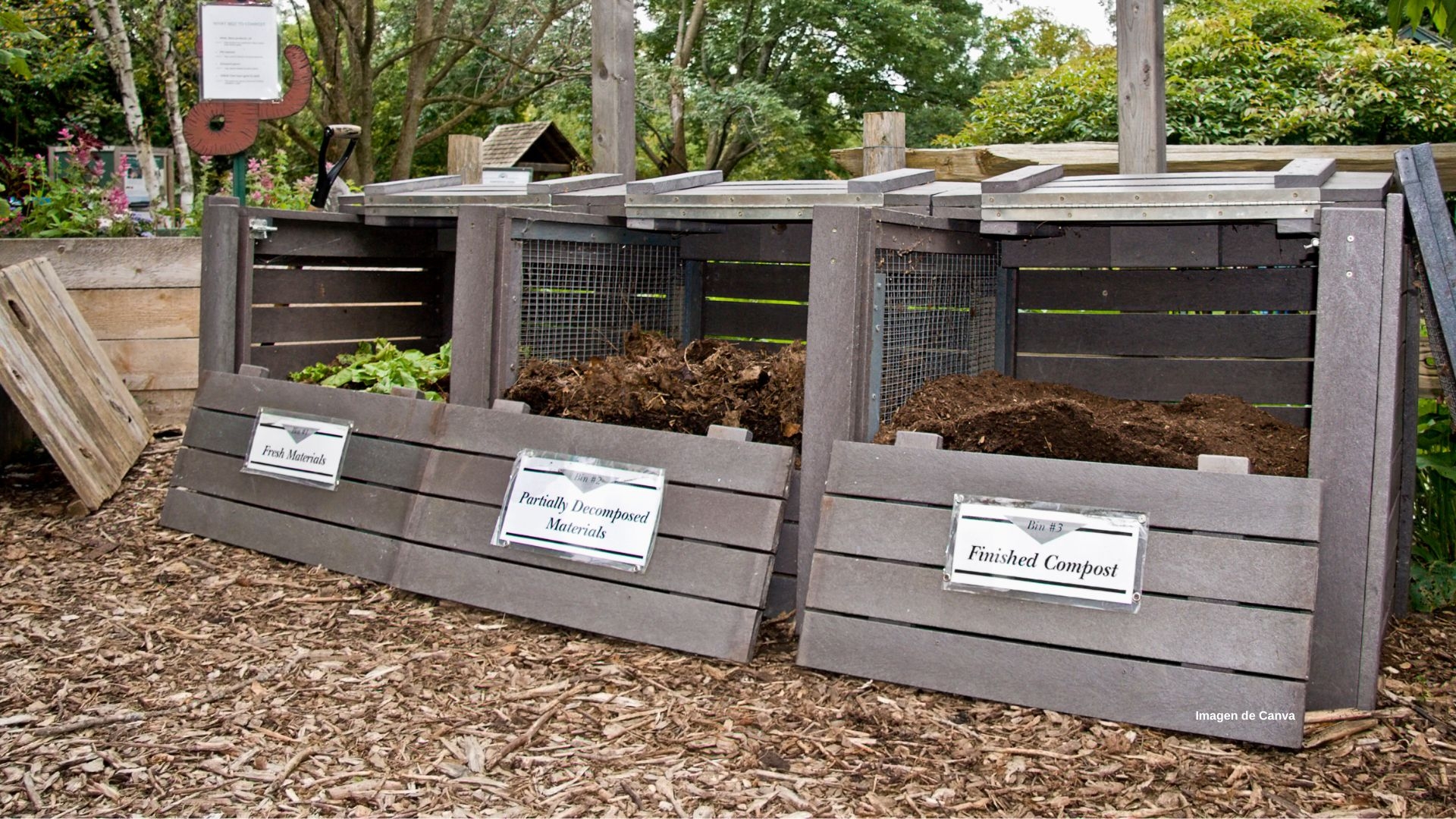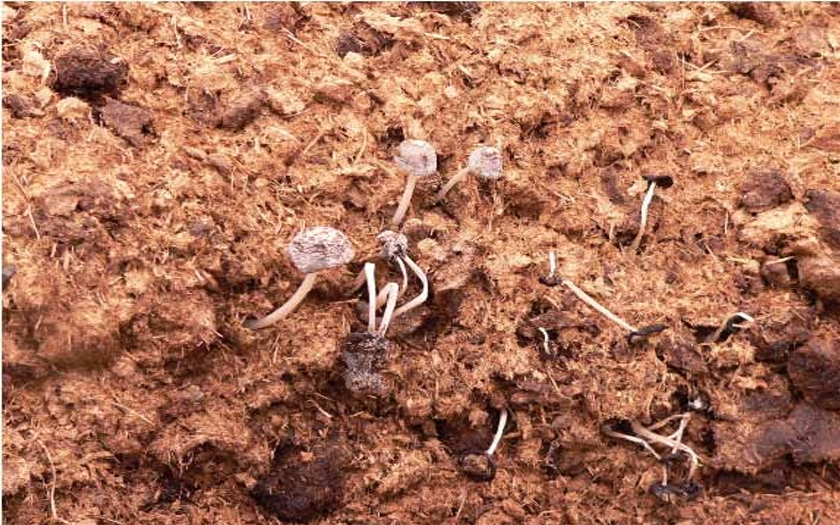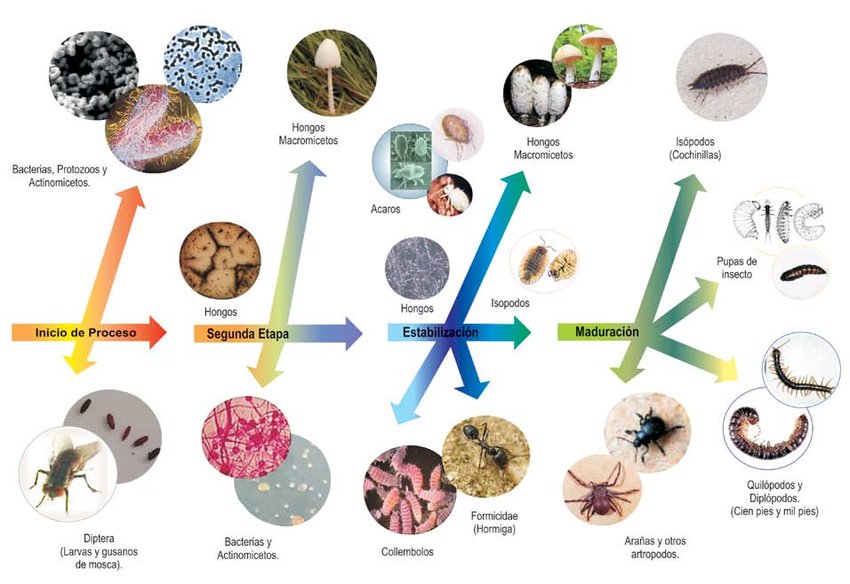🔬The Biology of Compost
Transforming Waste into Resources and Innovating for the Future
In this chapter, we’re going to talk about something truly special that connects all of nature: compost. Let’s imagine compost as nature’s magical recipe, where organic waste, such as fruit and vegetable peels, dry leaves, or plant remnants, is transformed into something valuable and full of life. This process turns “waste” into an incredible resource that enriches the soil, providing nutrients and improving its quality so new plants can grow strong and healthy. It’s like giving back to the soil what we’ve taken from it—a continuous cycle that helps take care of our planet!
What is Compost?
Compost is the result of a natural decomposition process of organic materials, something nature has been doing for millions of years. In the soil, tiny organisms like bacteria, fungi, worms, and insects work together to break down leaves and plant residues. These invisible little workers transform these materials into nutrient-rich "compost," a perfect fertilizer for plants. It's like making a super smoothie for our garden or farm!
How Does It Work?
Composting is like a recipe with specific ingredients. The manual Composting in the Classroom by Trautmann, Nancy M.Krasny, Marianne E. suggests using three types of materials:
Brown materials: These provide carbon and can include dry leaves, small branches, and cardboard.
Green materials: These provide nitrogen, such as fruit and vegetable scraps, eggshells, and grass clippings.
Water: Moisture helps keep the decomposition process going.
This mix creates the perfect environment for soil microorganisms, like bacteria and fungi, to transform these materials into a dark, nutrient-rich soil called humus. Observing composting in real-time can be a wonderful way to connect students with essential ecological processes.

The Science Behind Composting: Microorganisms and Macroorganisms in Action
Throughout the composting process, organic material goes through various stages in which different organisms play a role. According to The Farmer's Composting Manual, the stages of composting can be identified by changes in temperature, smell, and texture. Each stage has its key players:
Initial Phase: The First Actors of Composting At the beginning of composting, bacteria called mesophiles start working at moderate temperatures. They play a key role in breaking down the simplest materials. For example, the Pseudomonas and Bacillus genera are major contributors. Simultaneously, earthworms and small insects, such as springtails (soil arthropods), help decompose softer materials and aerate the compost, preparing it for the next stages.
Hot Phase: The Heart of Composting When the compost reaches temperatures above 45°C, bacteria that work at moderate temperatures are replaced by thermophilic bacteria, which thrive at higher temperatures. These bacteria, such as those of the Thermus genus, are capable of breaking down complex materials like cellulose and lignin, accelerating the process. This stage is also known as the hygienization phase because the heat eliminates contaminants such as harmful bacteria, fungi, and unwanted seeds. It is essential to ensure safe and high-quality compost.
What Happens to the Macroorganisms? During this phase, earthworms and other larger organisms withdraw due to the heat, but small heat-resistant invertebrates remain at the edges of the compost, where the temperatures are lower.
Cooling and Maturation Phase After the main carbon and nitrogen sources are depleted, the temperature drops to around 40-45°C. At this point, mesophilic bacteria return, and fungi such as Aspergillus and Penicillium appear to continue decomposing the remaining material, creating a homogeneous and stable compost. Macroorganisms like earthworms return to aerate the compost and enrich it, producing a fertile humus ideal for agriculture or gardening.

As noted in the book Composting in the Classroom, "monitoring these phases allows students to observe and learn about soil microbiology and nutrient cycles." Additionally, this process helps visualize the positive impact of reducing waste and reusing it in an eco-friendly way.

Composting Activities in the Classroom
El libro Composting in the Classroom ofrece una serie de actividades prácticas para cada etapa del compostaje, lo cual lo hace ideal para el aprendizaje de estudiantes de primaria, secundaria y bachillerato. Algunas actividades que puedes implementar en el aula incluyen:
Construir una caja de compostaje: Usar materiales reciclados para crear una estructura simple para el compost puede ser una buena y practica idea. También podrías utilizar fabricación digital para crear su propio compostador, como el Wormound o Biocompostera Digital de Fab Lab U. de chile.
Monitoreo de temperatura: Usar un termómetro para medir el calor generado, observando cómo la temperatura cambia según los materiales y las condiciones. En este apartado herramientas como el P-Bit una herramienta educativa portátil que permite a los estudiantes medir y monitorear variables ambientales como temperatura, humedad y luz. Diseñado para fomentar la curiosidad científica, el P-Bit ofrece una forma sencilla y práctica de aprender sobre el medio ambiente y su impacto en la vida cotidiana o el Kit de Sensores de Smart Citizen un sistema independiente que permite medir y registrar datos sobre calidad del aire, ruido, temperatura y otros factores ambientales. Diseñado para proyectos de ciencia ciudadana, este kit proporciona datos precisos y accesibles para analizar el entorno urbano y fomentar la participación activa en temas de sostenibilidad y ecología.
Diario del compostaje: Llevar un registro de los cambios observados en el compost en cuanto a olor, color y consistencia, permitiendo a los estudiantes conectar la teoría con la práctica.
The book Composting in the Classroom offers a series of practical activities for each stage of composting, making it ideal for primary, secondary, and high school students. Here are some activities you can implement in the classroom:
Building a Compost Bin: Using recycled materials to create a simple structure for composting can be a practical and hands-on idea. You can also use digital fabrication to design your own composter, such as the Wormound the Digital Biocomposter from Fab Lab U. in Chile.
Temperature Monitoring: Use a thermometer to measure the heat generated, observing how the temperature changes depending on the materials and conditions. In this context, tools like the P-Bit a portable educational device allow students to measure and monitor environmental variables such as temperature, humidity, and light. Designed to spark scientific curiosity, the P-Bit provides a simple and practical way to learn about the environment and its impact on daily life. Alternatively, the Smart Citizen Sensor Kit, an independent system that measures and records data on air quality, noise, temperature, and other environmental factors, is ideal for citizen science projects. This kit offers accurate and accessible data to analyze urban surroundings and encourages active participation in sustainability and ecology topics.
Composting Journal: Keeping a journal to record observed changes in the compost, such as odor, color, and consistency, enables students to connect theory with practice effectively.

Entrepreneurship with Compost Inoculators: An Adventure for Students and the Community ✨
Creating and sharing compost inoculators is an amazing activity that allows students to unleash their creativity and think of useful solutions for their community. Here are some simple ideas to get started:
Nutrient-rich compost for sale: Students can produce inoculated compost, packed with nutrients, and offer it to farmers, gardeners, or neighbors who want to enhance their plants.
DIY inoculator kits: Prepare practical kits that include a small sample of dry inoculator and a clear instruction booklet so anyone can use it at home or in their garden.
Community workshops: Organize workshops where students teach advanced composting and inoculation techniques, sharing their knowledge and promoting sustainable practices.
Let’s Turn Waste into Resources and Foster Entrepreneurship!
Composting is not only a way to care for the environment but also an exciting educational experience. By working with inoculators, students will learn about sustainability, responsibility, and develop skills to undertake innovative projects.
We invite teachers, students, and families to join this adventure! Discover how to turn waste into valuable resources while cultivating the entrepreneurial spirit. 🌱✨
Last updated